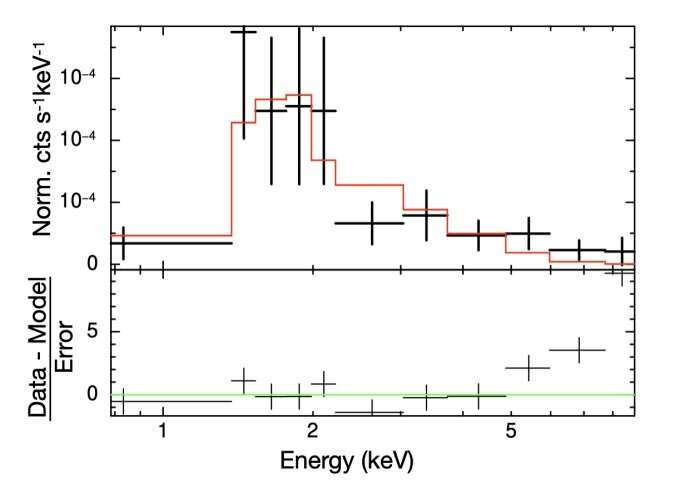October 19, 2022 report
Astronomers explore the properties of supernova SN 2017hcc

Using various spacecraft and ground-based telescopes, astronomers have conducted multiwavelength observations of a Type IIn supernova known as SN 2017hcc. Results of the observational campaign, published October 6 on arXiv.org, shed more light on the properties of this supernova.
Supernovae (SNe) are powerful and luminous stellar explosions. They are important for the scientific community as they offer essential clues into the evolution of stars and galaxies. In general, SNe are divided into two groups based on their atomic spectra: Type I and Type II. Type I SNe lack hydrogen in their spectra, while those of Type II showcase spectral lines of hydrogen.
When it comes to Type IIn SNe, they showcase narrow optical emission lines and hot continua. These supernovae are usually observed when they interact with dense material surrounding the star, hence the light seen here on Earth comes mostly from such interactions.
SN 2017hcc (also known as ATLAS17lsn) was detected on Oct 2, 2017, by the Asteroid Terrestrial–impact Last Alert System (ATLAS) and classified as a Type IIn SN. It reached a peak at 13.7 mag in around 40–45 days, which indicates an absolute peak magnitude of approximately −20.7 mag at a distance of some 244 million light years. Further observations of SN 2017hcc have found that it obtained a peak bolometric luminosity of 1.34 tredecillion erg/s, making it one of the most luminous SNe IIn ever discovered.
A team of astronomers led by Poonam Chandra of the National Radio Astronomy Observatory (NRAO) in Charlottesville, Virginia, started observing SN 2017hcc 29 days after its explosion using NASA's Chandra, Spitzer and Swift spacecraft, as well as the Karl G. Jansky Very Large Array (VLA). The observational campaign lasted till May 3, 2021, and delivered important information regarding the properties and evolution of this supernova.
The study found that late time infrared emission dominates the spectral energy distribution of SN 2017hcc. It turned out that although this supernova had a very high bolometric luminosity likely to be due to circumstellar interaction, it was faint in X-rays and radio wavelengths. The ratio of X-ray to total luminosity was measured to be lower than 0.0003.
In general, the early properties of SN 2017hcc suggest that it experienced a shock breakout into a dense mass-loss region. The astronomers noted that the mass-loss rate obtained at 30 days from the shock breakout was about 0.1 solar masses per year, whereas at few hundred days it was approximately 0.002 solar masses per year. Therefore, the results indicate that the progenitor of SN 2017hcc underwent an enhanced mass-loss event a decade before the explosion.
"SN 2017hcc likely underwent a phase of enhanced mass-loss years before the explosion. This has been seen in many SNe IIn and may indirectly support an LBV [luminous blue variable] scenario, though the fine tuning between an LBV undergoing enhanced mass-loss and SN explosion remains an important issue," the researchers explained.
In concluding remarks, the authors of the paper noted that further studies of SN 2017hcc could help advance our knowledge about highly interacting SNe, whose progenitors remain a mystery.
More information: Poonam Chandra, Roger A. Chevalier, Nicholas J. H. James, Ori D. Fox, The luminous Type IIn supernova SN 2017hcc: Infrared bright, X-ray and radio faint. arXiv:2210.03212v1 [astro-ph.HE], arxiv.org/abs/2210.03212
© 2022 Science X Network





















